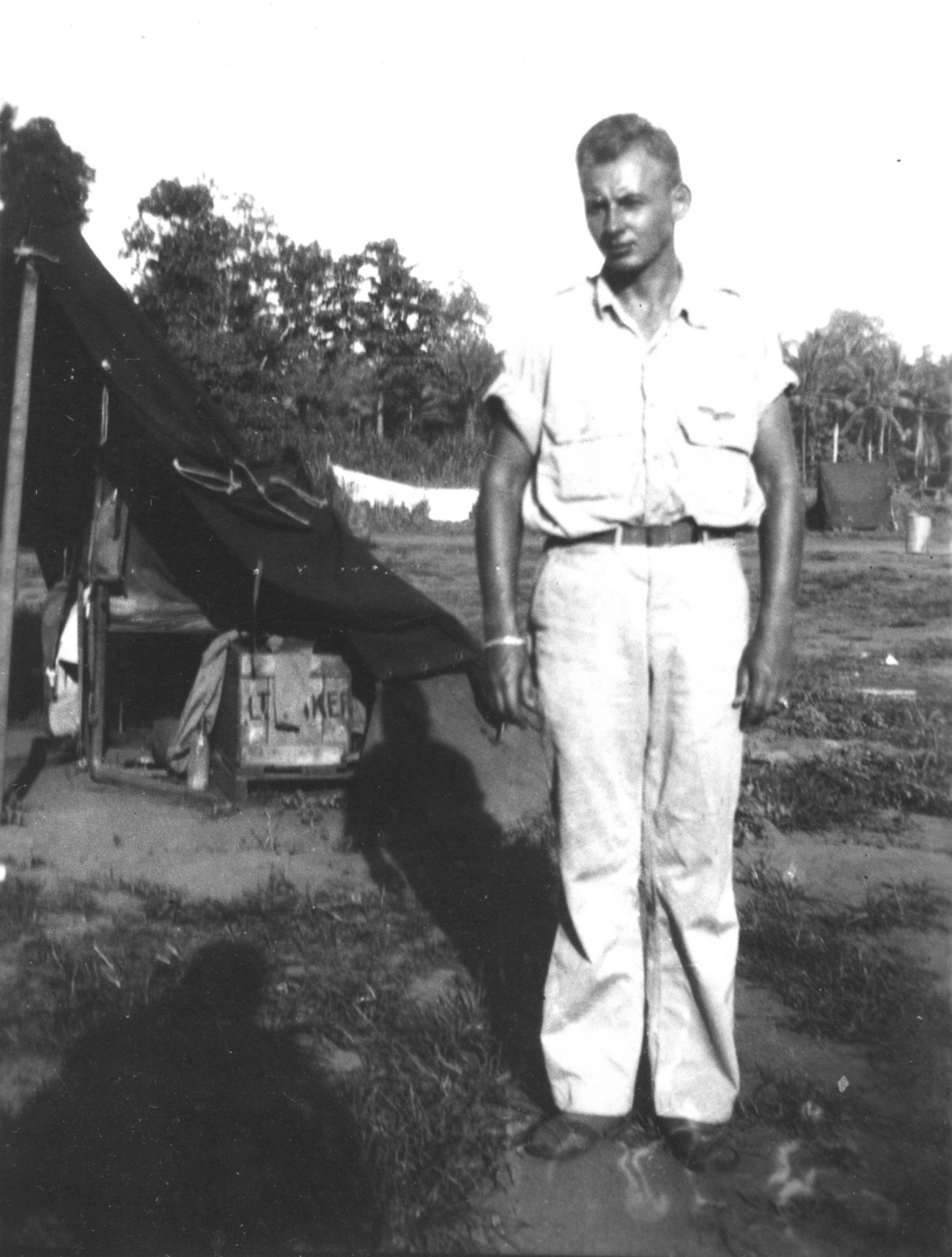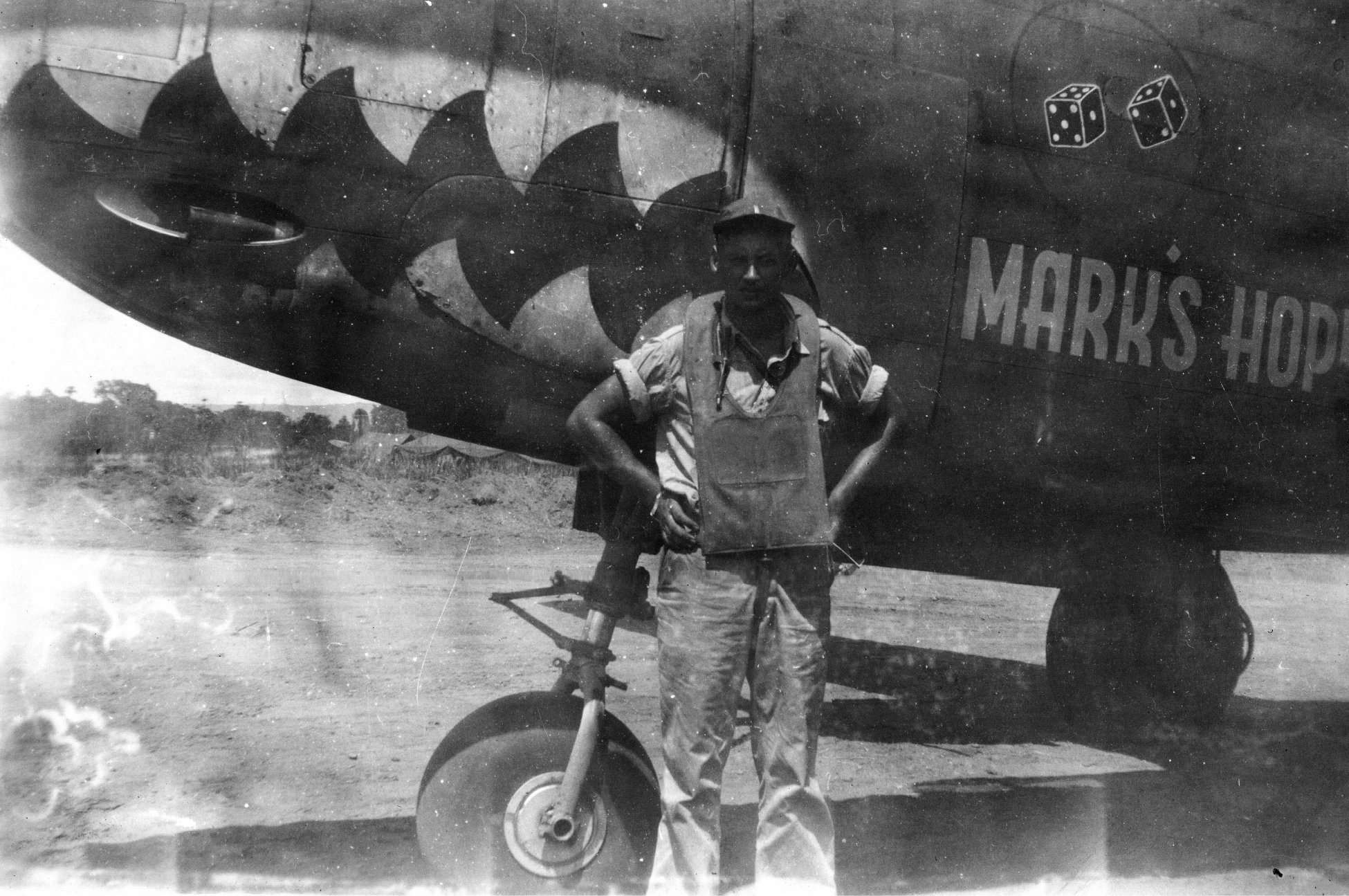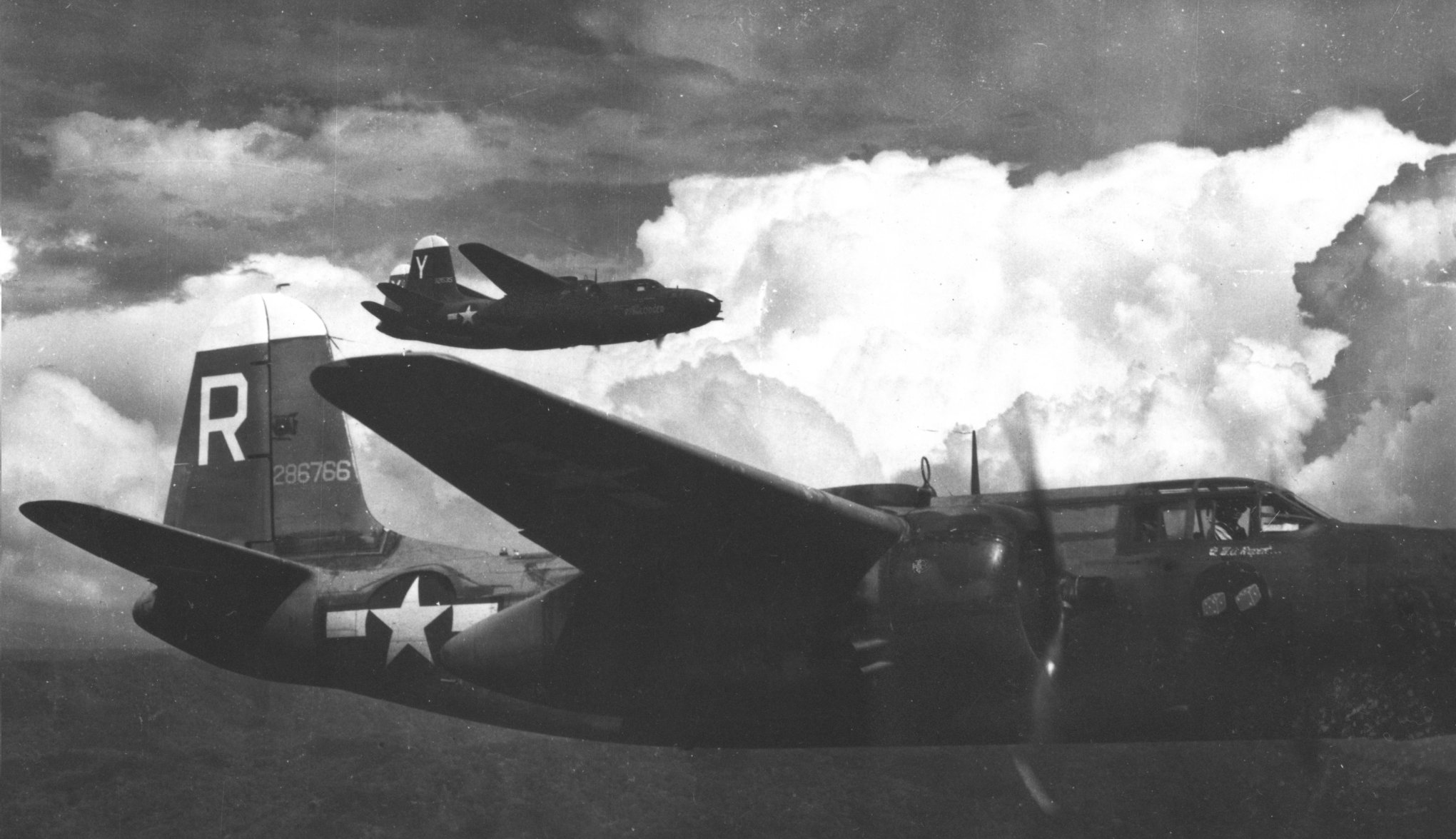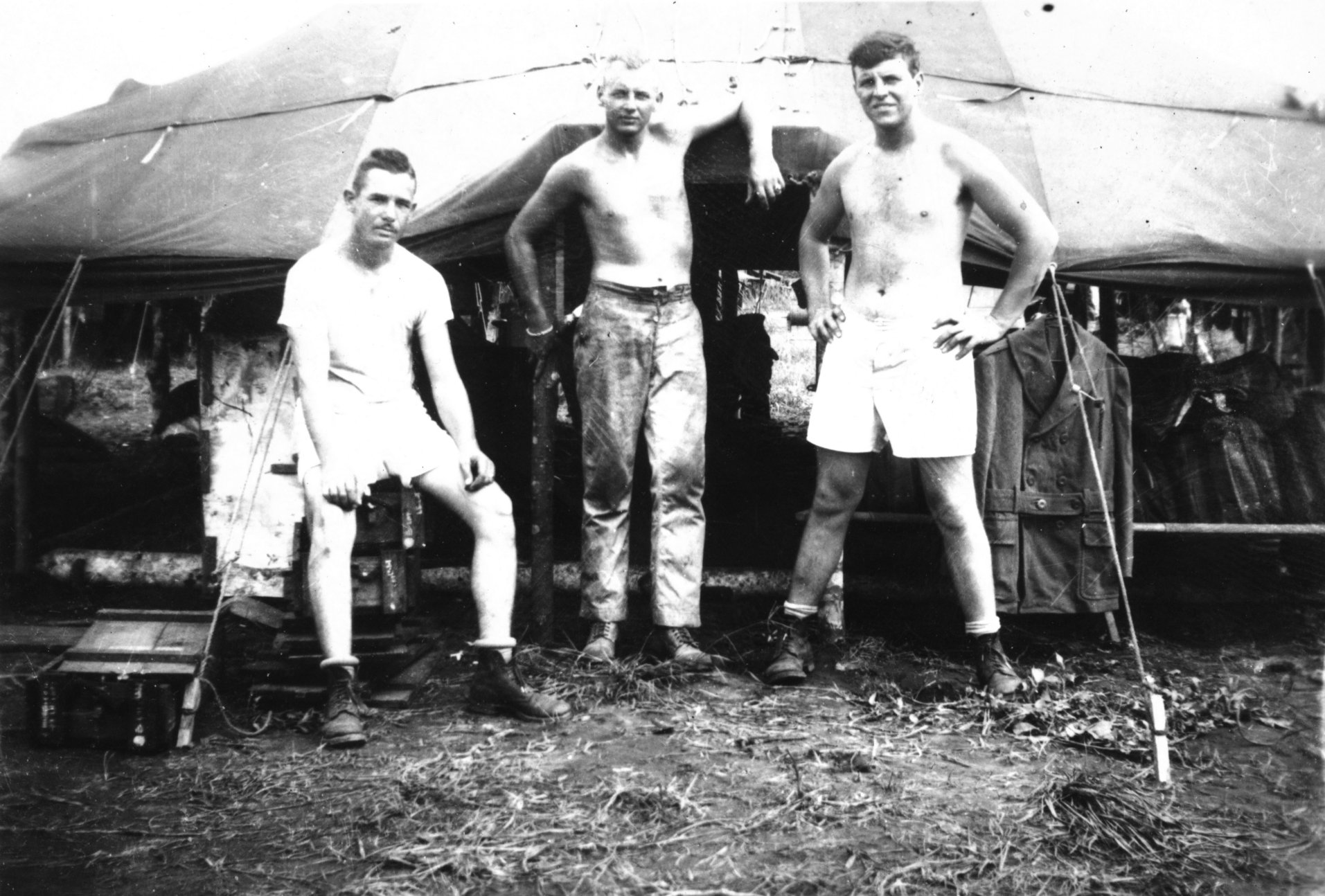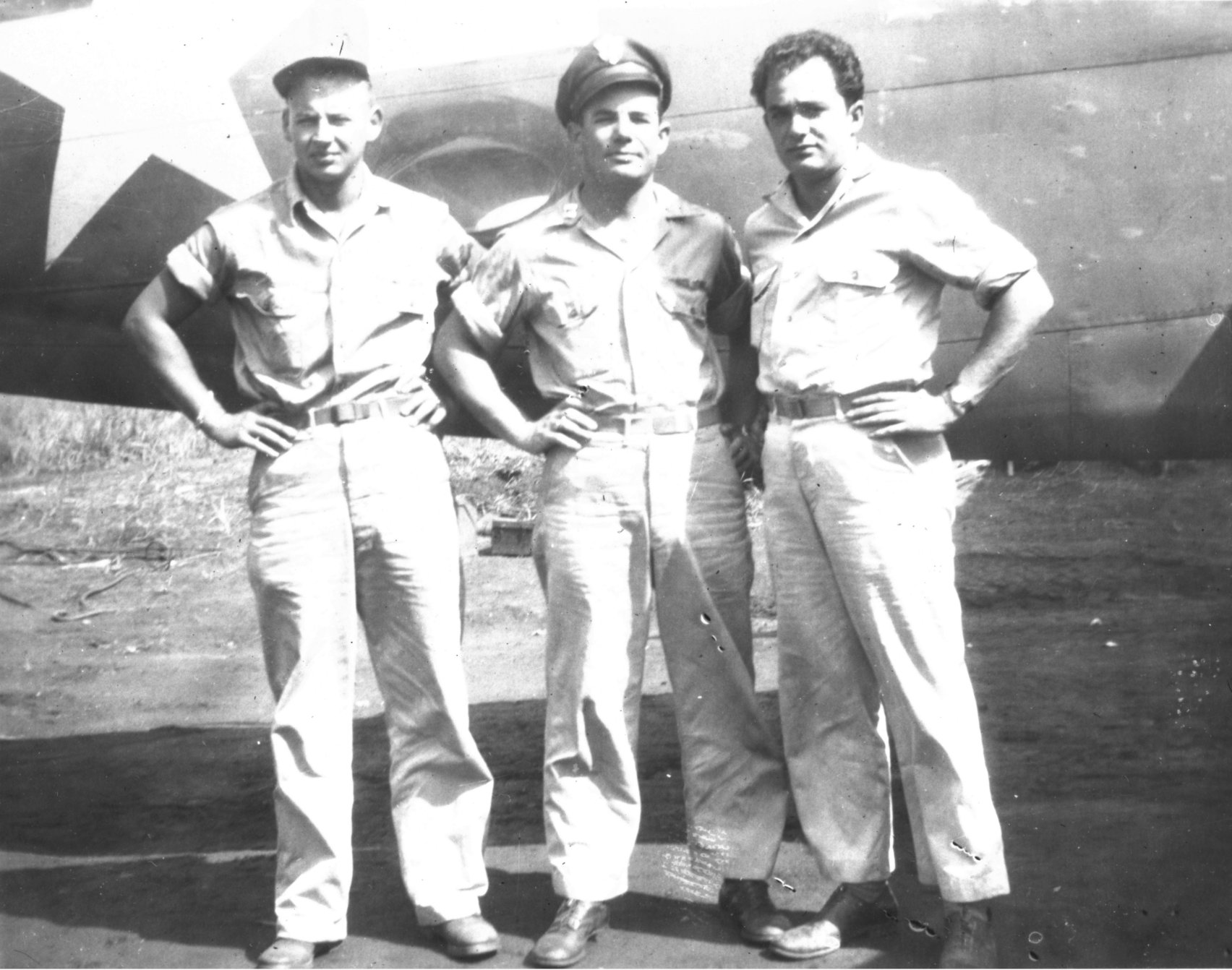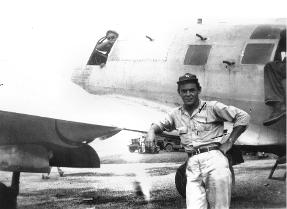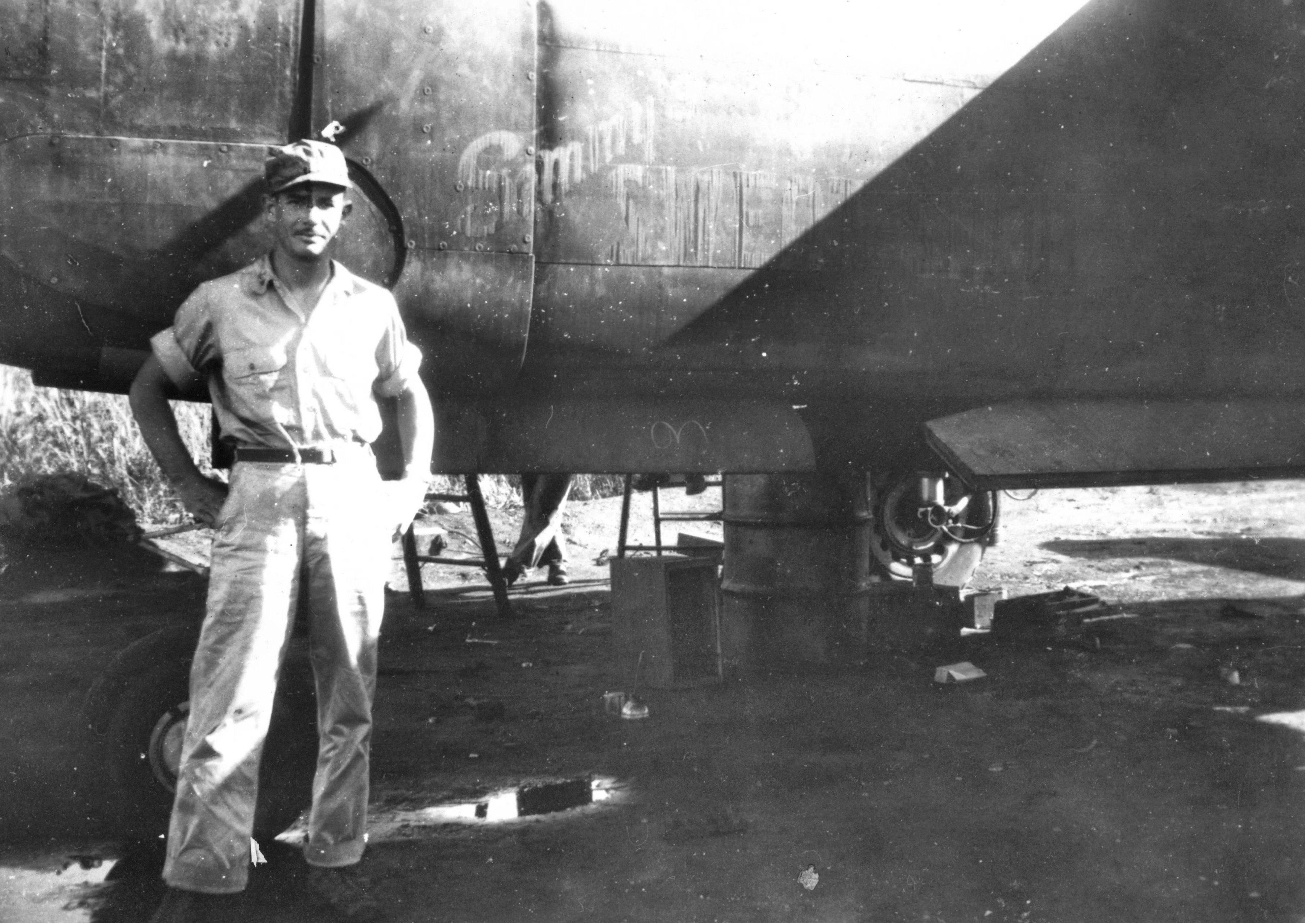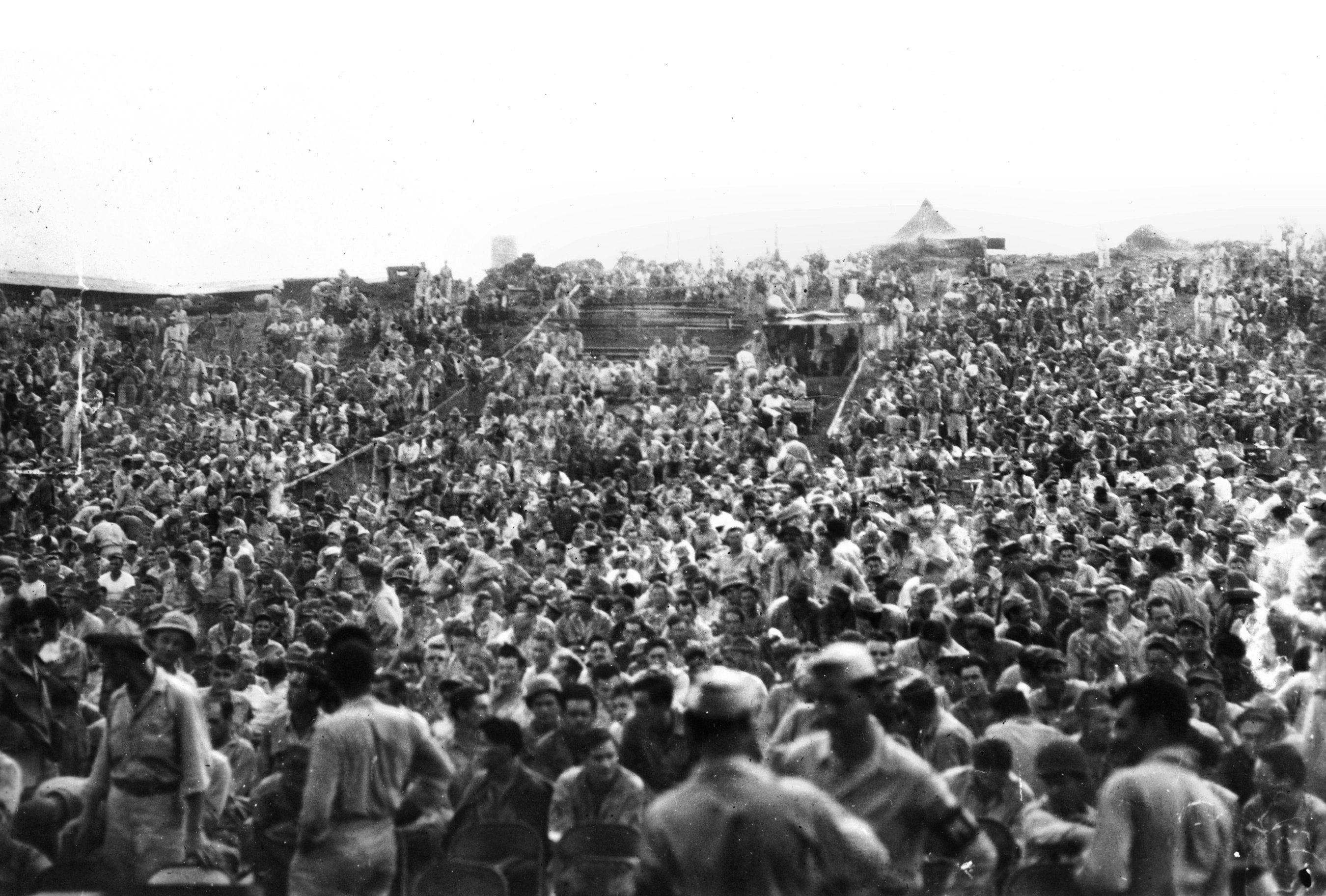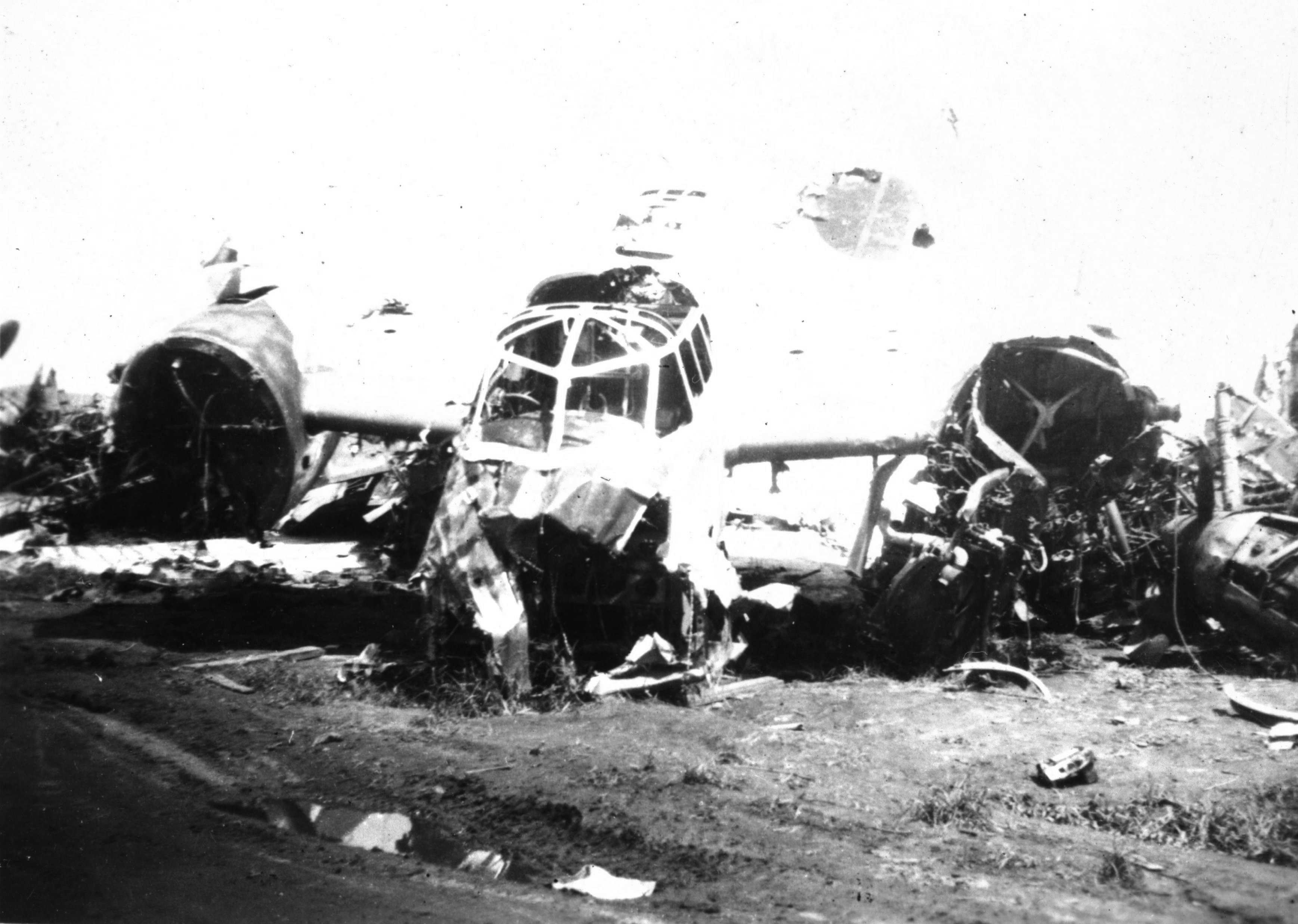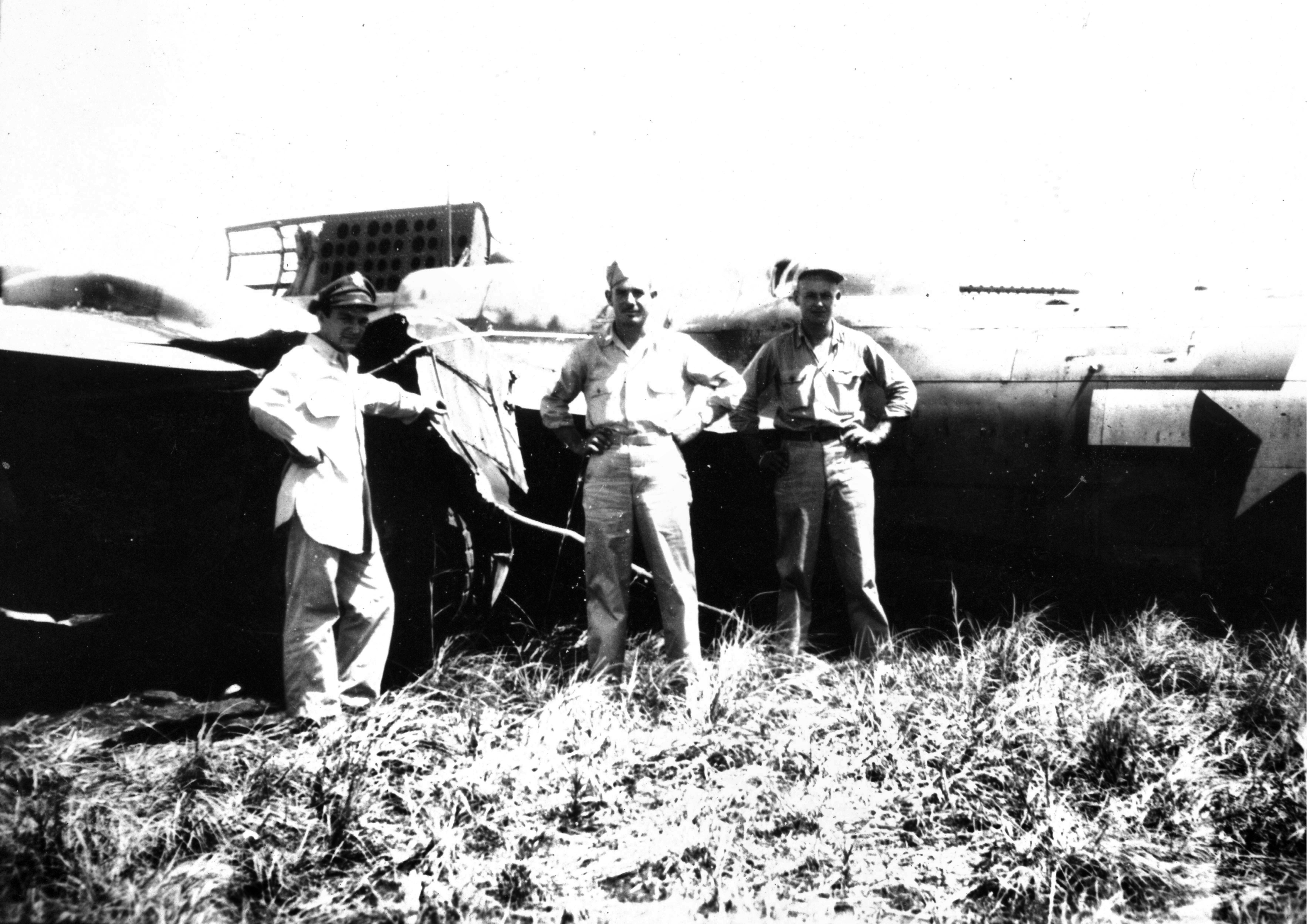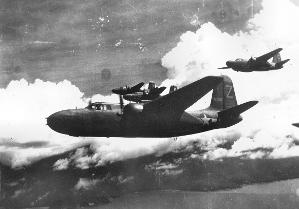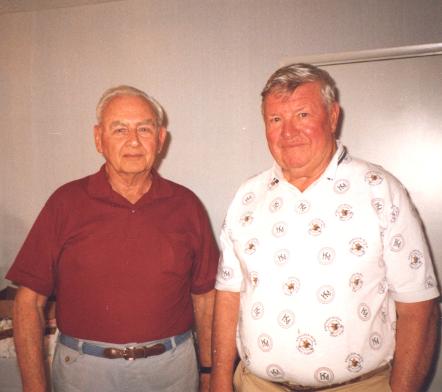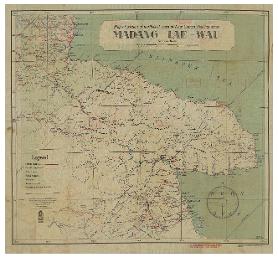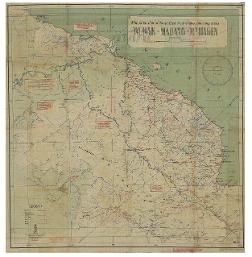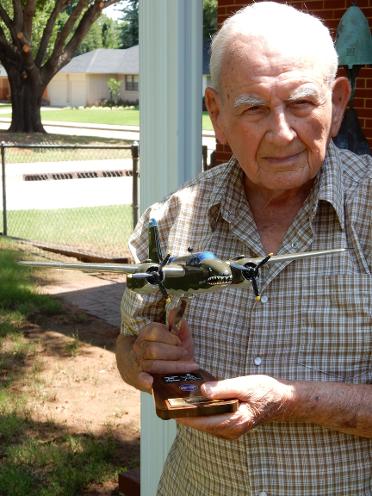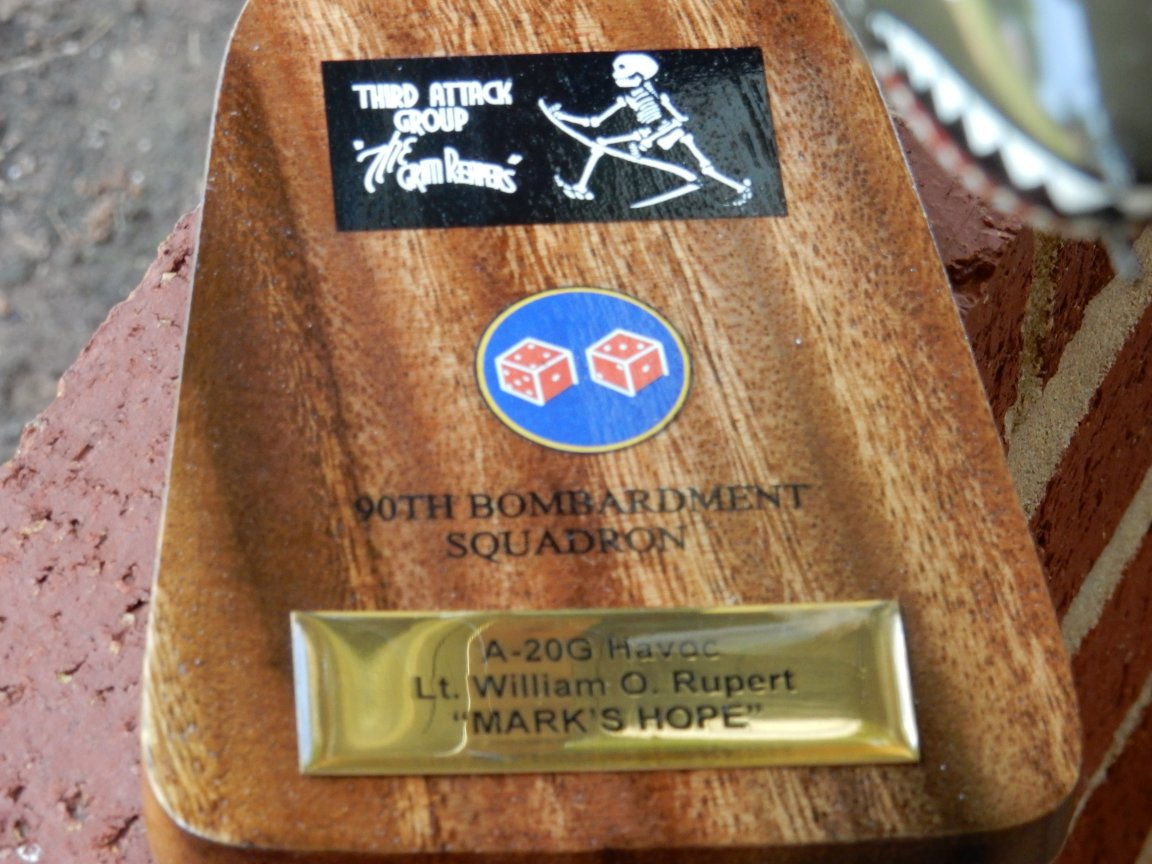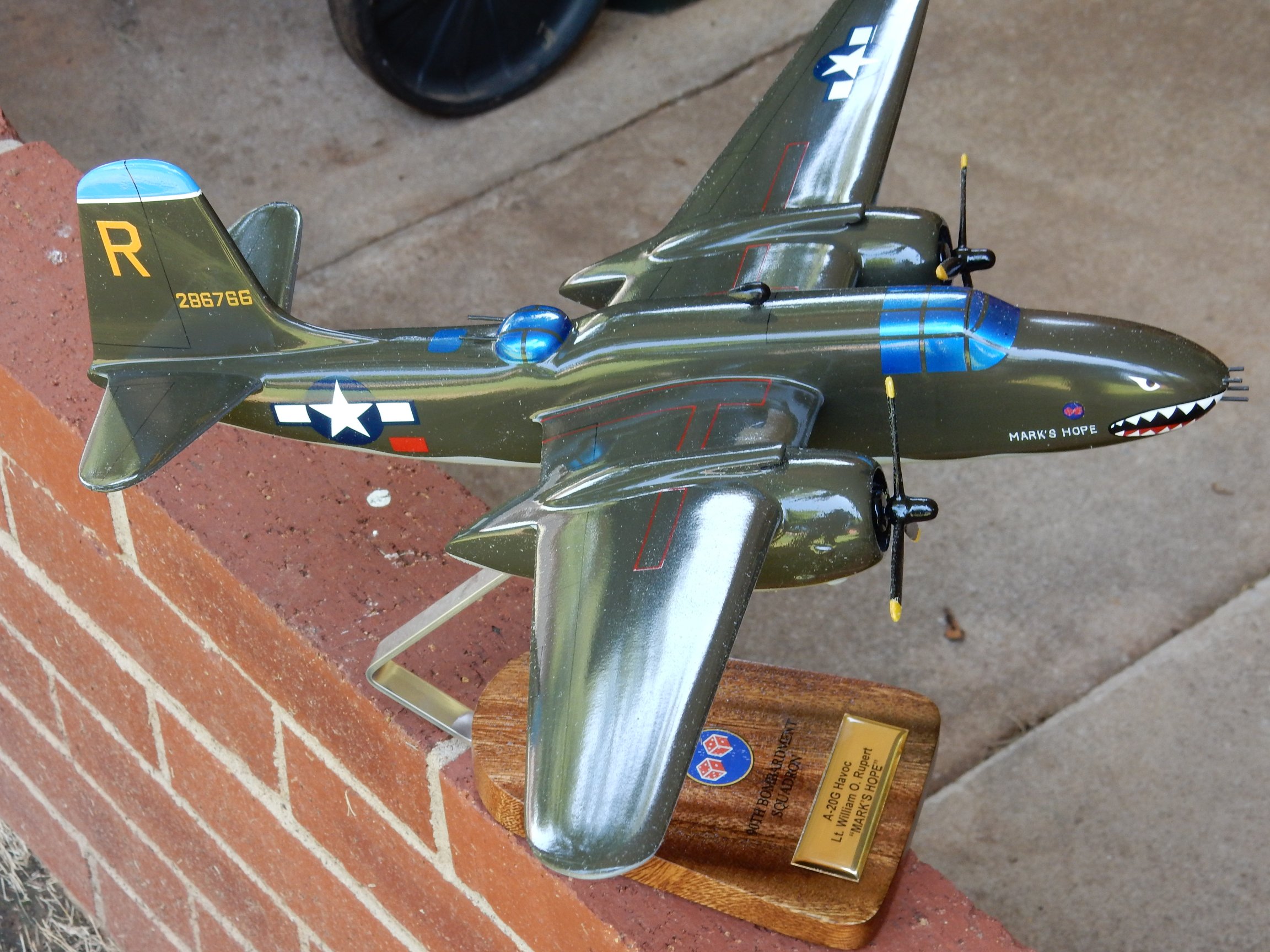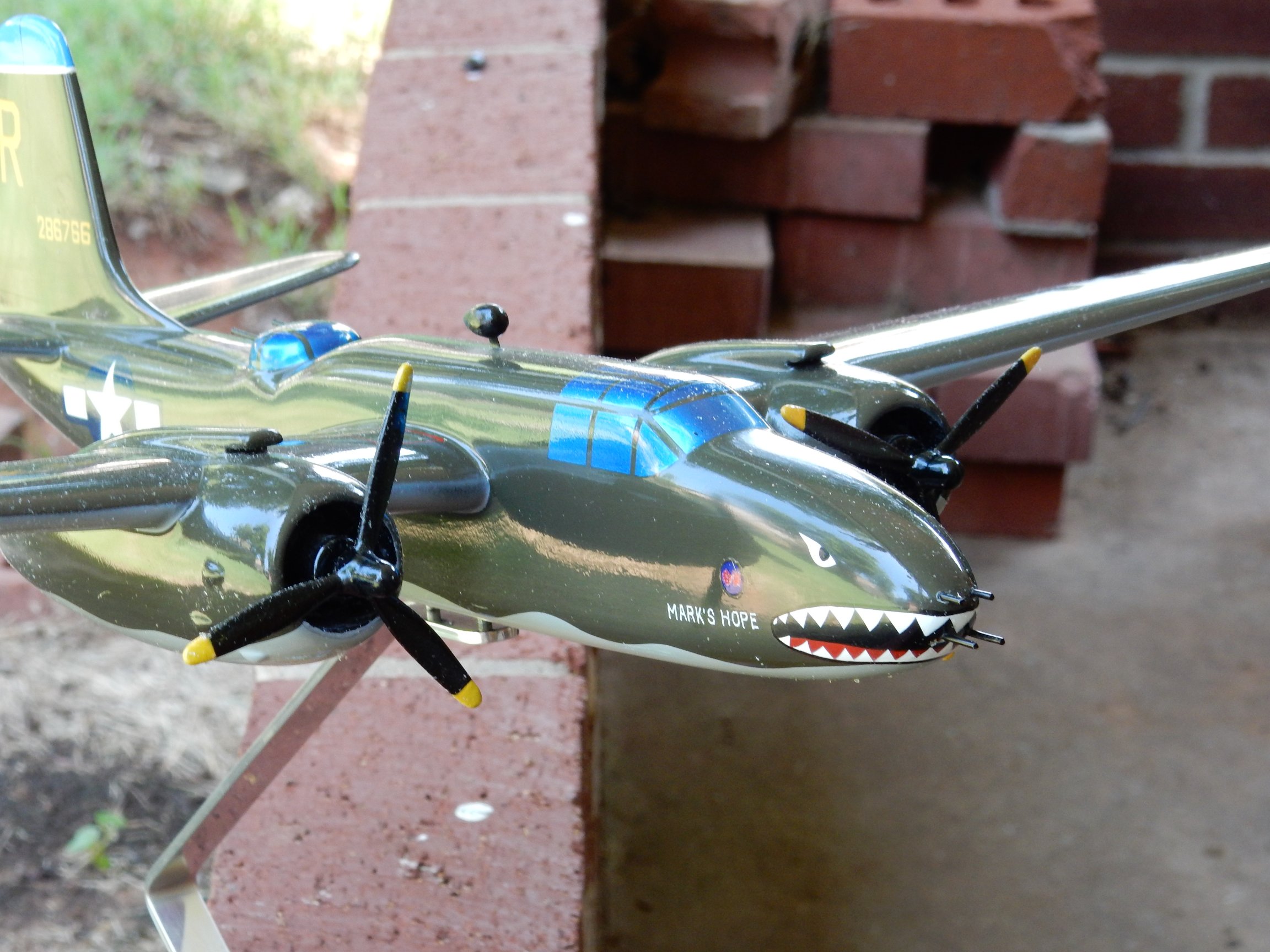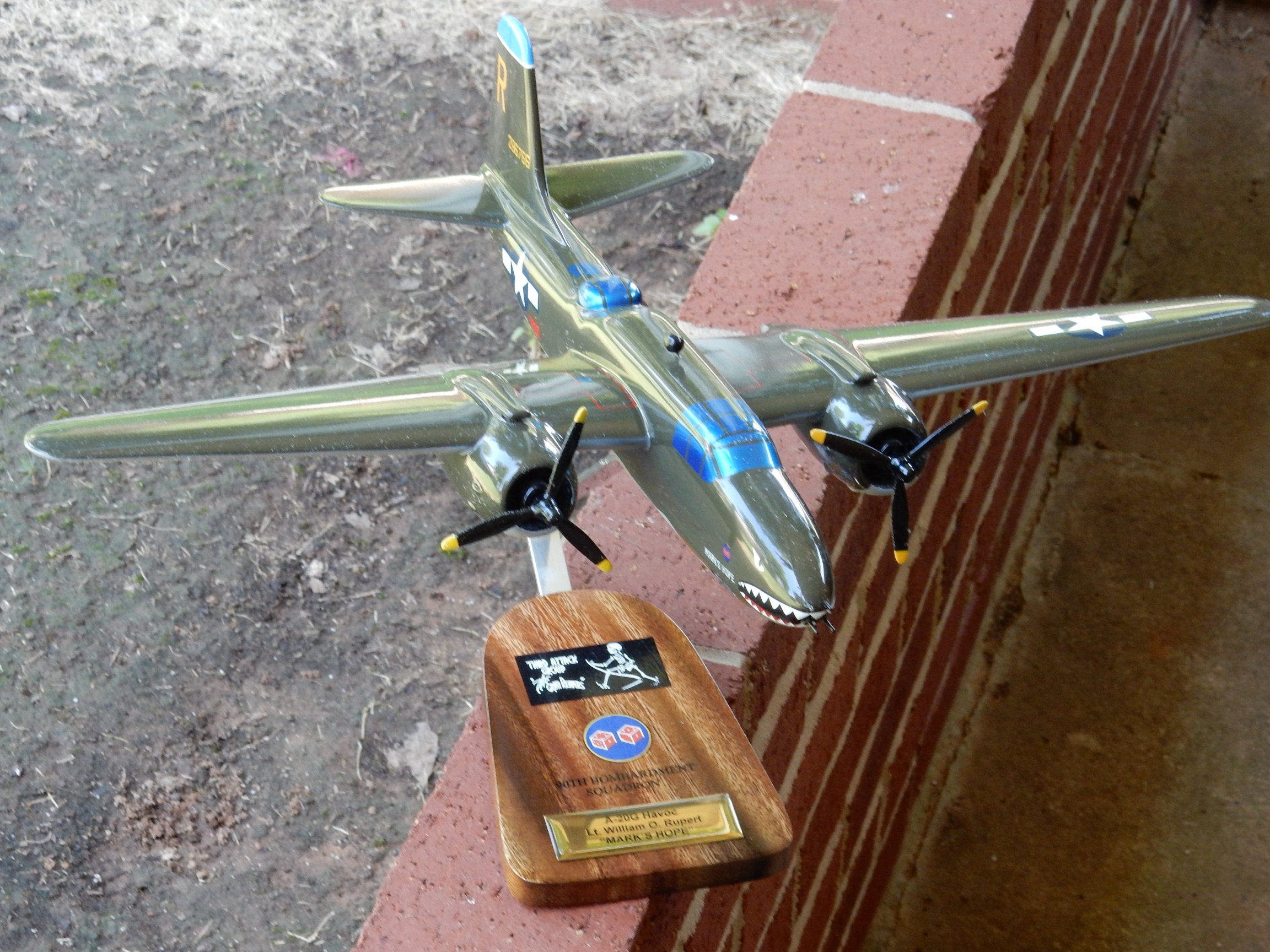I live in Midwest City, Oklahoma, which is sort of a bedroom addition to Oklahoma City.
I think I will give you a little background and how I wound up in A-20s. Born and raised in the hills of western Pennsylvania in town of Kittanning. I was working as a freight brakeman on the Pennsylvania Railroad when the war started. I went to the recruiting office on 1 Feb. 42 to enlist and was encouraged to take the exam for flight training and which I passed. I was sent home to await available space in a training cycle. I was called in early June to Maxwell Field, Montgomery, Alabama for pre-flight. Took my Primary training at Decauter, Alabama, Basic at Walnut Ridge, Arkansas; Advanced at Spence Field, Moultrie, Georgia.
This was in the AT-6 so I was all primed to be a fighter pilot. Sadly, assigned to dive bombers at Tampa, Florida. Six weeks later, after some white knuckle flights in those wornout Navy Douglas Dauntless's, I and two others were put on orders for Will Rogers Field, Oklahoma City, for A-20 training. The closest I had been to a multi engined aircraft up till then was seeing one parked so you can imagine the shock when I saw that an A-20 had more than one engine! My introduction to multi-engine flying was one take off and one landing in a B-25, a cockpit check out of the A-20, and pointed to the runway! Although I did not know it at the time, that was the best assignment I could have been given. Within a short time I learned to love that aircraft. We were flying old B and C models but they were in good mechanical condition.
Arrived at Will Rogers Field sometime in May of 1943. Our training was to be in low level operations. Needless to say, we all loved it and we were universally hated by every farmer and rancher for a hundred miles in all directions. The chickens quit laying, the cows stopped giving milk, and the steers were running off weight! I pity whoever had to listen to the complaints.
Want to digress here for a short story that had a major effect on my life. One of the other officers had a date with a local nurse and insisted that I come as a date for her friend. A BLIND DATE! No thanks. But he insisted and finally convinced me that I could always pretend an early leave for night flying. We proceeded to the nurses home of the Oklahoma General Hospital. I met his date and she went upstairs to get mine. She came down those stairs and left me starring like an idiot. An auburn haired beauty. I spent every spare minute for the rest of my stay there with her. Gave her a ring before I left; Married her when I came back from New Guinea and spent 52 wonderful years before I lost her to cancer in 1996.
Training continued through May, June and July. In early August orders were cut for 19 crews, each crew being a pilot and two enlisted gunners, to proceed by rail to San Fransisco for shipment to the Pacific theater. Once there we were put on aircraft that were departing each day one or two at a time. Don't know how I got lucky enough to be the last to leave, fully ten days after the first one. My ride was a B-24 that was loaded with mail sacks. No flight deck for me. I was told to make myself comfortable? in the rear with the mail sacks. So I go to war across the Pacific in the back of a B-24!
Arrived in Brisbane to find all of the officers gone and orders for me to proceed with the enlisted men, by rail to Charters Towers. What a nightmare that trip was. It was a troop train with several hundred Australian soldiers. The feeding consisted of the train stopping at stations were mess facilities were usually set up on the station platform and the men took there mess kits and were fed. Great! But guess what---none of us had mess gear. Every stop from then on had us scattering to buy anything, fruit, vegetables, bread, and anything that was edible and could be carried. Don't remember how long that trip was but we eventually made it.
Arrived in Charters Towers ready to get in my plane and win the war only to be told that our aircraft were somewhere in transit. Until they arrived and were ready we would be assigned to other units. I drew the 380th Bomb Group operating out of a couple of isolated strips south of Darwin. Getting there was an experience that is a story all by itself so I won't go into detail. Rail into the town of Mt. Isa deep in the outback. Australian Army truck convoy from there. Riding in the bed of the first truck because the dust was so thick after that any further back in the convoy
would have been out of the question. Can't remember how many days but at last we arrived. My God! The 380th was flying B-24s! I am sure there are old timers out there who swear that the 24 was one of the finest aircraft flying. I will limit my feelings about it to some advice: If you ever have a chance for a flight in one---DON'T!
I was assigned as co-pilot to a made up crew headed by a former co-pilot. The missions were long and mostly dulling. 6 to 10 hours, often with an extra fuel bladder in the bomb bay. We flew strikes on Jap installation all over the islands that are now Indonesia. No fighter cover so occasionally under Jap fighter attack. Joined the 380th in late August 43. The time went by with me wondering when I was going to hear about our A-20s. Finally in late January 1944 after flying 18 missions, the CO told me our planes were with the 3rd Attack and I could join them if I wanted but had the option of staying. I think he was upset when I asked how soon can I leave. Rode a courier to Townsville and bummed rides from there to Dobodura only to find that the 3rd had moved to Nadzab. Bummed another ride there.
Myself and a Lt. Traskowski were assigned to the 90th Squadron. The CO only had one unassigned plane so we cut cards for it and I won. It was a brand new A-20G with a tail letter of R, my name. So, beginning in February 1944 through September I flew 51 missions, completing 301 hours, and received CONUS orders. The missions flown during this period are familiar to all: strikes on airfields, shipping, barge hunting and troop support for landings at Aitape and Biak. The most memorable of all was a strike at Hollandia that involved a good amount of the 5th Air Force in which a major tropical front formed between us and home during the mission. The full story is covered in a publication called Black Sunday by Michael Claringbould. Aircraft losses almost put the 5th Air Force out of business. I flew through the front at minimum altitude by watching the white surf breaking on the shore. Seemed like forever but was probably only a short period of time. Didn't have enough fuel to make it home so landed at a strip whose name I can't recall but where seemed like the whole Air Force was trying to get in. When I checked my fuel tank readings they were all in the red. After receiving fuel went back to Nadzab. One other mission stands out in my memory. After we had moved to Hollandia we staged out of Biak for a strike on the oil fields at an island in the Indonesian chain called Ambon. A lot of fire was left behind on that one.
With orders for home in hand I caught a flight to Finschafen which was the designated embarkation point. All departing from here were by ship when available and there were some there who had been over a month. I caught a flight to Nadzab, checked in with Operations and was put on a flight the next day. Once again it was a B-24 like I had ridden over but this was an admirals plane---the interior had been remodeled with big leather chairs and a small kitchen that served us meals.
Arrived in San Fransisco in early October 1944, flew to Oklahoma City, found that Marthel still wanted me so was married 12 Oct. 1944.
Spent some time with my parents in Kittaning, Penna. then on to a 30 day R and R at Atlantic City courtesy of the Air Corp. Assigned to Aloe Field, Victoria, Texas, which was a single engine advanced flight school. Was TDY'd to Randolph Field to attend instructers school then back to Aloe. I hated instructing and asked for duty in Maintainence and wound up as test pilot on every thing coming out of the repair shop.
Became good friends with an officer whose family was in the funeral business in Alabama. He had plans to open several funeral businesses in other locations and wanted me as a partner. Said I should learn the business in a home doing a lot of funerals since his did not. With nothing better in mind, I agreed.
Was released from active duty in August 45 and was accepted by a funeral home in Oklahoma City for training as an embalmer and funeral director, a two year requirement. This home did a couple of hundred funerals a year plus running ambulance service so I received plenty of training. Finished here and enrolled in Mortuary School in Pittsburgh, Penna. which was just 45 miles from my home so we could live with my parents and I could commute.
Money was tight so I was looking at any way to make a buck. There was a National Guard infantry company in my home town that accepted me as a platoon leader. Picture that if you can---an ex-pilot as an infantry platoon leader!!!!
But I made the drills and drew my pay, finished the 12 months of school and returned to Oklahoma City to prepare to take the state board exam to work in the funeral business. I forgot to tell you that while I was in school, my friend with the grand ideas sold his funeral business and became a banker.
State board was in November 1948. In late October I received a telephone call from my mother that she had a telegram ordering me back to active duty. I was to report to Camp Stoneman, California, for shipment to the Philippines. The recall was from the National Guard! By strange circumstance I wound up in the Army and retired as a Lt. Col. in 1965.
Bill Rupert
BILL RUPERT & THE A-26
Just finished reading Bob Mosley's recollections of the two A-26s that arrived at Hollandia in summer 1944 and thought I would pass on my remembrance.
To lay a little groundwork I must tell you about the rudder pedals on the A-20. They were mounted at an angle with the top being further towards the nose than the bottom. The brakes were applied by pressing on the top of the pedals. Over a period of time I had got into the habit of sliding my feet up high on the pedals while on the approach so that I was ready to use the brakes immediately if necessary. It became such a habit that I would not even be conscious of it.
Then I got my check ride in the A-26. Takeoff was fine and the handling in the air was ok except that that I didn't like those engines restricting my view and the aircraft just had a, for want of a better word, heavy feel. My vote was for the A-20.
Anyhow, on the approach I unconsciously slide my feet up high on the rudder pedals. It did not register that these pedals were in a vertical position so that when I touched down I had the brakes on. Immediately blew both main gear tires and by the time I got it stopped, had ruined the wheels. Well, naturally, since no idiot was ever expected to ruin wheels, there were no spares. I don't know how they did it but the mechanics modified a couple of B-25 wheels to use and it continued flying. I don't think I need tell you that I was not invited to take any more A-26 rides.
I do know that they continued to accompany the A-20s on missions and the pilots I remember talking to did not particularly like them.
Bill Rupert
ESCAPE MAP - PAPUA, NEW GUINEA
AAF Nos. 27 / 28
In September 1943,
AAF requested that the Army Map Service prepare the first cloth map
of the Southwest Pacific Area series. This was map Nos. 27/28 of
northeastern coast of New Guinea with a scale of 1:500,000.
The base map was compiled from maps prepared by
the Australian Land Headquarters and information provided by the
Allied Geographic Section of the Southwest Pacific Area (SWPA)
Command. The New Guinea map, like all maps in this series, was
printed with different geographic areas on both sides. For example,
sheet number No. 28 from Wewak south to Mandang was printed on one
side and the reverse side includes sheet No. 27 showing the area from
Mandang south to Salamaua. The Nos. 27/28 New Guinea map was the only
cloth map produced whose primary color was green and as such does not
resemble the other maps subsequently produced.
Source: History of WWII US Cloth Escape Maps

